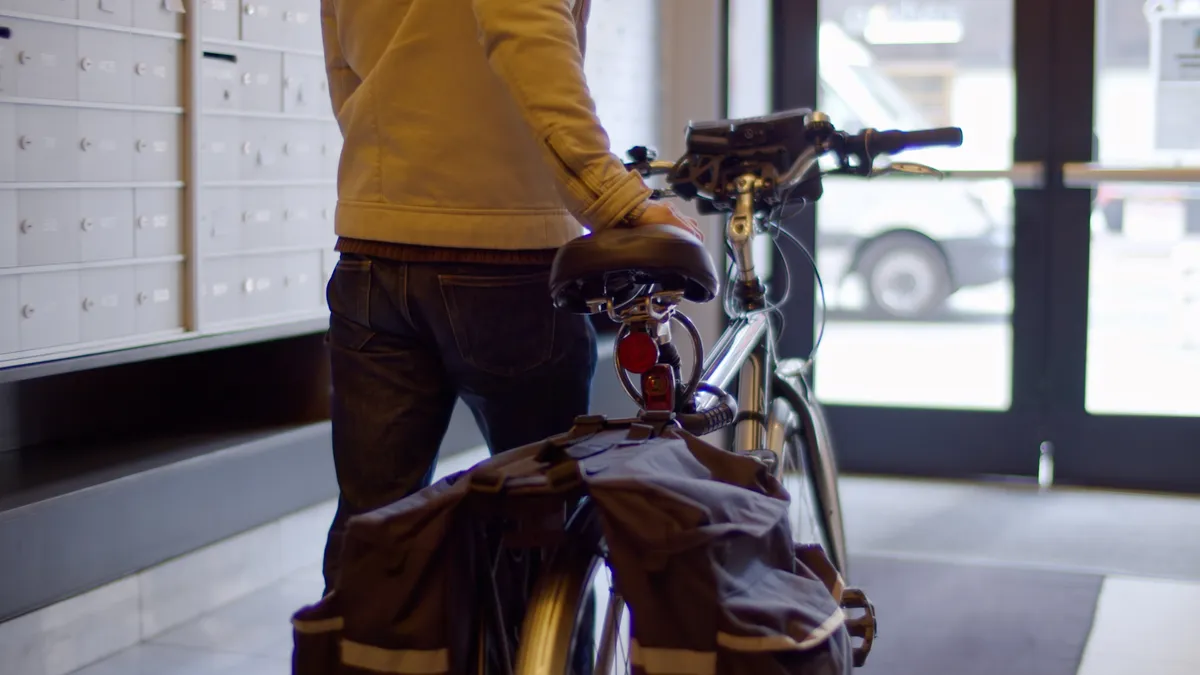An increase in battery fires linked to electric bicycles has caught the attention of municipal and federal officials, who point to public education rather than bans as the best way to keep people safe.
As of late December, there were 206 e-bike fires in New York City in 2022, more than double the number of fires that occurred the year prior, according to a New York Fire Department spokesperson. Those e-bike fires are blamed for 142 injuries in 2022, almost 80% more than in 2021, and six deaths. In 2020, there were just 44 e-bike fires, which were associated with 23 injuries and no deaths, the department said.
The news organization The City reported that New York ZIP codes that are considered low-income areas experienced the highest proportion of e-bike fires, and most of the fires occurred at multiunit residential properties, 31 of which were public housing apartments. The FDNY spokesperson confirmed the accuracy of the reporting.
National Fire Protection Association spokesman Brian O’Connor said other U.S. cities do not appear to track this issue. There have been news reports of e-bike fires in London and Secunderabad, India, where eight people were killed in a September fire at an electric scooter warehouse.
The Consumer Product Safety Commission has ordered three e-bike recalls in 2022 due to battery issues, up from one in 2021. The largest recall, of 21,000 e-bikes, was ordered against the manufacturer Ancheer, which sold its bikes through Sears, Walmart and Amazon.
On Tuesday, the CPSC sent a letter to 2,000 manufacturers and importers of micromobility devices, including e-bikes, e-scooters and self-balancing scooters (also called hoverboards), advising them that failing to follow UL safety standards could expose them to enforcement action.
A September 2022 CSPC staff report found that between 2017 and 2021, there were 207 deaths related to micromobility vehicles, 134 of them due to fires. Of the deaths attributed to micromobility product fires, 118 were related to hoverboards, 12 were related to e-scooters — including one dockless rental unit – and four to e-bikes.
The New York City Housing Authority, which regulates public housing, proposed a ban on indoor e-bike storage in public housing in June 2022 but backed off that proposal in October after public outcry. Still, there are reports that private buildings are instituting bans of their own on e-bikes, e-scooters and other micromobility vehicles.
Li-ion batteries are “pretty unique fire hazards,” said NFPA’s O’Connor. “They produce their own heat [and] oxygen, and they produce their own fuel, which is the gas that's a byproduct of the chemical reaction that happens when they start to fail.” The lithium burns hot and fast and can set fire to adjoining cells in the battery in a cascade called “thermal runaway.” While a watch may have one Li-ion cell, he pointed out, an e-bike may have 200.
The primary problem, fire industry experts and micromobility advocates say, lies with the low quality of cheap batteries and the desire of low-income owners to extend their utility beyond the bounds of safety.
“What you've seen in New York [is that] you're primarily dealing with aftermarket batteries and aftermarket issues with vehicles that might have been crafted on their own via conversion kits,” said James Gross, co-founder of Micromobility Industries, a California-based advocacy group that tracks the industry. “You can do [an aftermarket conversion] very easily with a bike. Is that the right thing to do? Probably not. But is that the most affordable way to do it? Probably yes.”
“I think the bikes are just more prone to having people tinker with them a little bit,” said O’Connor. Secondhand batteries and chargers are readily available. Also, physical damage from collisions or water are not always apparent. “Keeping [a Li-ion battery] in a room that gets too hot, gets too cold, both can trigger [a fire]. Charging it too quickly, discharging it too quickly, having the wrong components, mismatching components.”
Because Gross sees the problem as economic — low-income purchasers who use inexpensive e-bikes to help make their living — he has an economic solution. “I think the very easy solution is subsidizing riders who could maybe use some help with the cost of the vehicle. We continue to pass incredible legislation to incentivize electric car purchases. Why do we continue to prop up a lot of the automakers? I think that's where the conversation should go.”
O’Connor says teaching the public to understand when a battery is failing and what to do before it bursts into flame would save property and lives.
FDNY has published a bulletin that landlords are required to distribute, advising residents of the dangers of Li-ion batteries, how to store and treat them and what to do when they catch fire. The CSPC also gives advice that aligns with FDNY’s.
”As much as we want everyone to use the best batteries they can get, [listed batteries] are more expensive. So I think educating people [that such batteries are] worth the investment in your safety … [it’s] something that they would be able to consider.”



















